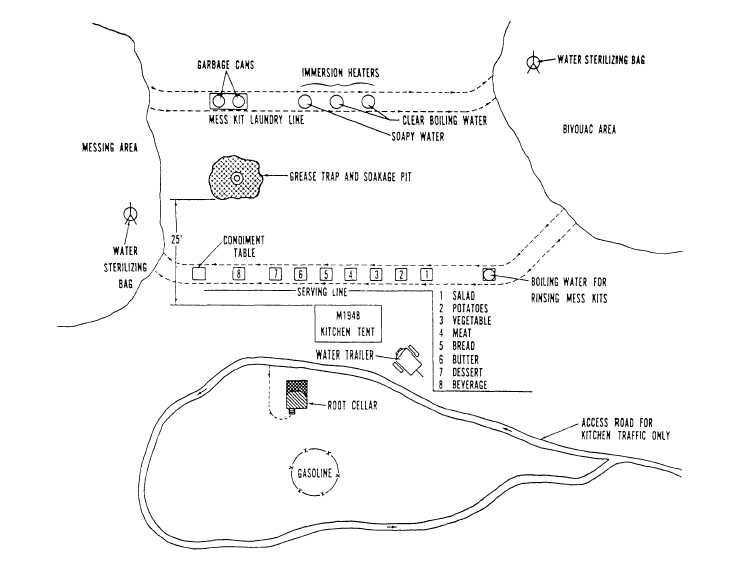| |
P-5010. This chapter discusses in detail the following:
water supplies, sources of water, water analysis,
standards and purification of water, and the Standard
organization and Regulations of the U.S. Navy,
OPNAVINST 3120.32, in case medical personnel are
not available. Remember that none of the methods of
disinfecting water contained in these publications
destroys radioactive substances or chemical poisons.
GROUNDWATER.— Groundwater from springs
or wells is usually better than surface water. When you
use water from a ground source, be sure it is a safe 100
feet or more from sources of contamination. Some
sources of contamination are heads, septic tanks, and
cesspools. In limestone ground formations, the distance
may need to be much greater. Wells and springs should
be constructed to exclude surface water and
high-groundwater infiltration. Well and spring sites
should not be subject to flooding.
SURFACE WATER.— Surface water is water from
rivers, lakes, streams, and ponds. When you must use
water from a surface source, take it from a point well
above and away from sewer outlets. Avoid places where
refuse drains into a river, stream, or lake, and oily areas
where wastes and drainage may make the water
unpalatable or unfit for use. Always choose the clearest
water possible; the clearer the water, the easier it is to
disinfect and the better its appearance will be.
Clearness, however, is no guarantee of safety. All
surface water must be treated.
Clean water receptacles daily with boiling water and
rinse with a solution of potassium permanganate
(one-third of a teaspoonful of potassium permanganate
Figure 11-2.—Rear area layout for field feeding.
11-2
|

